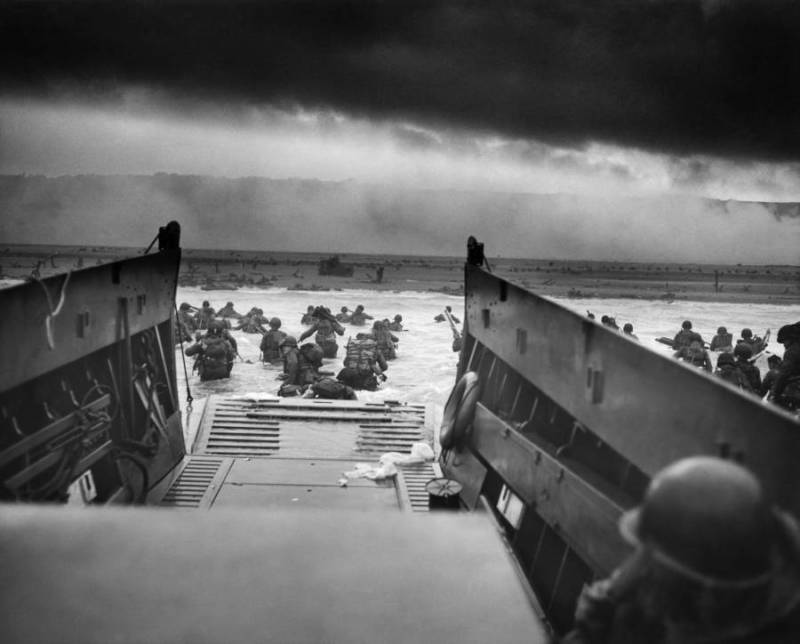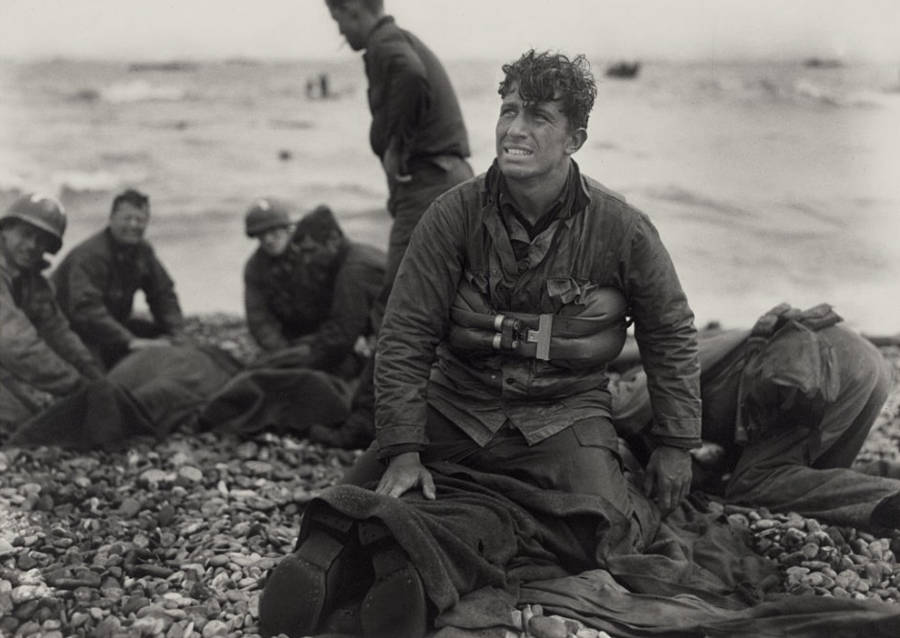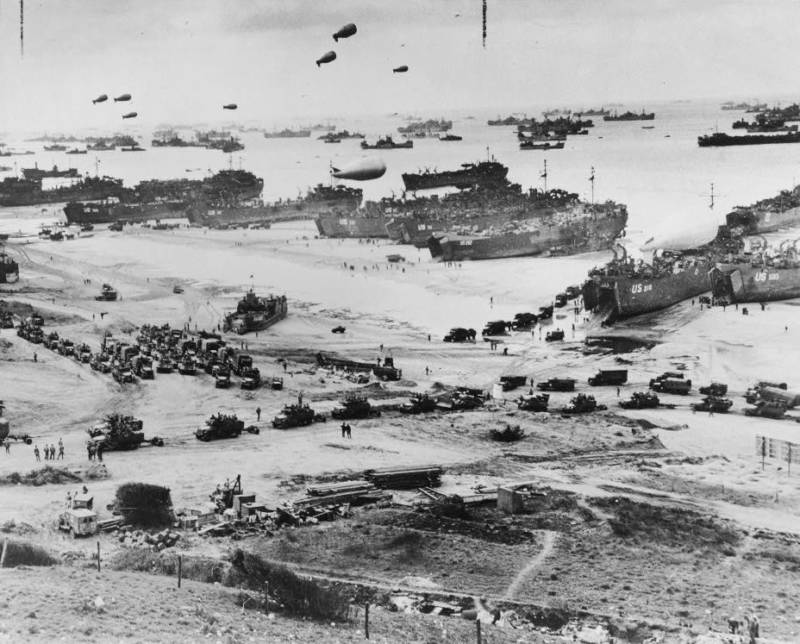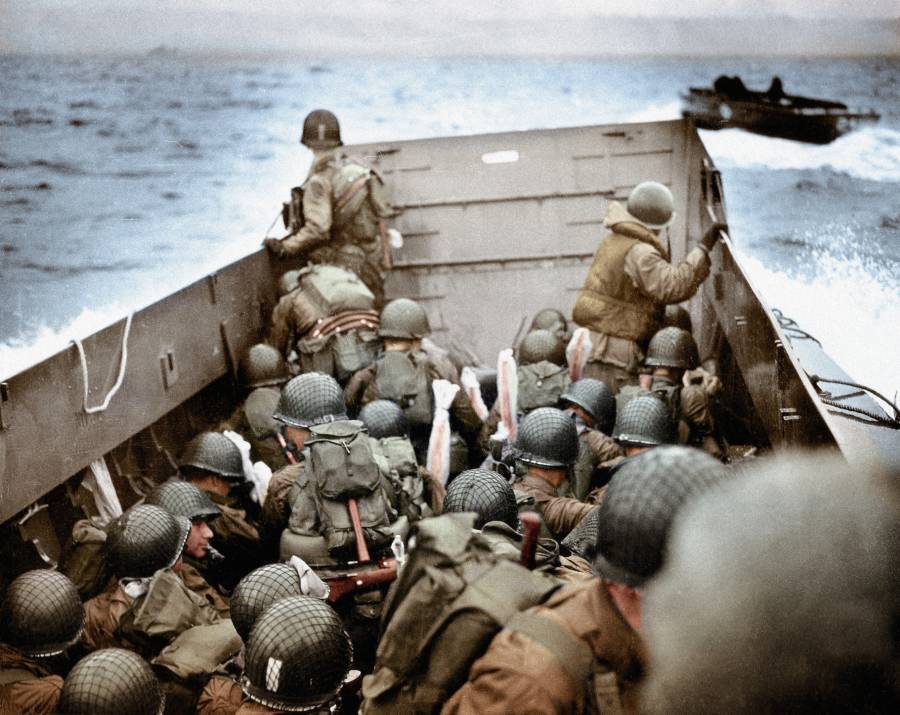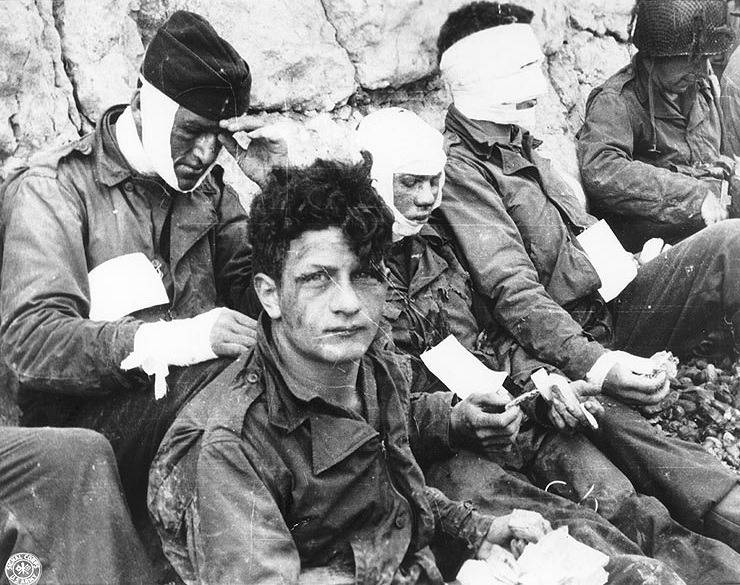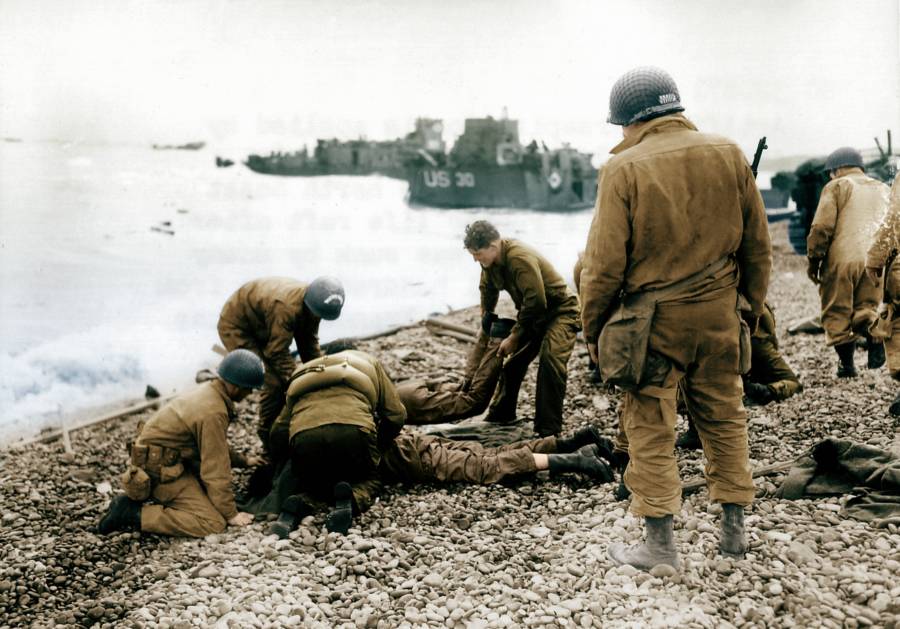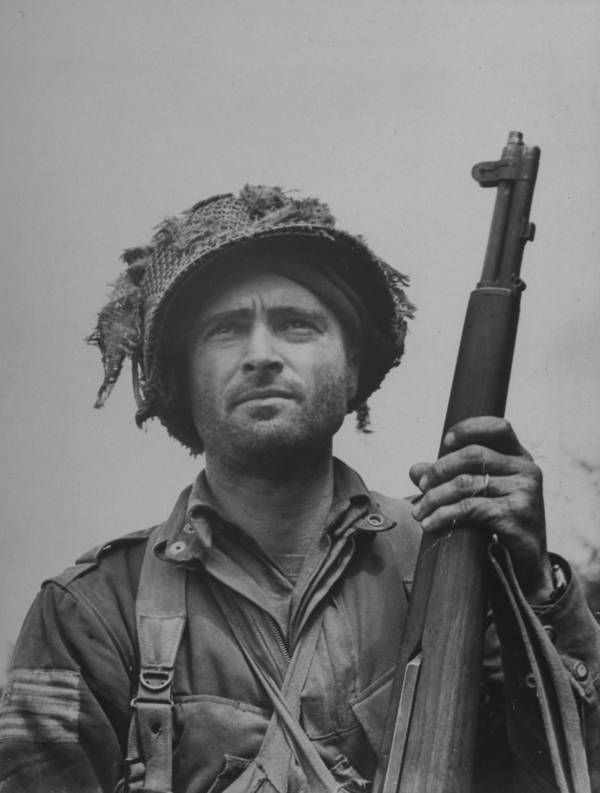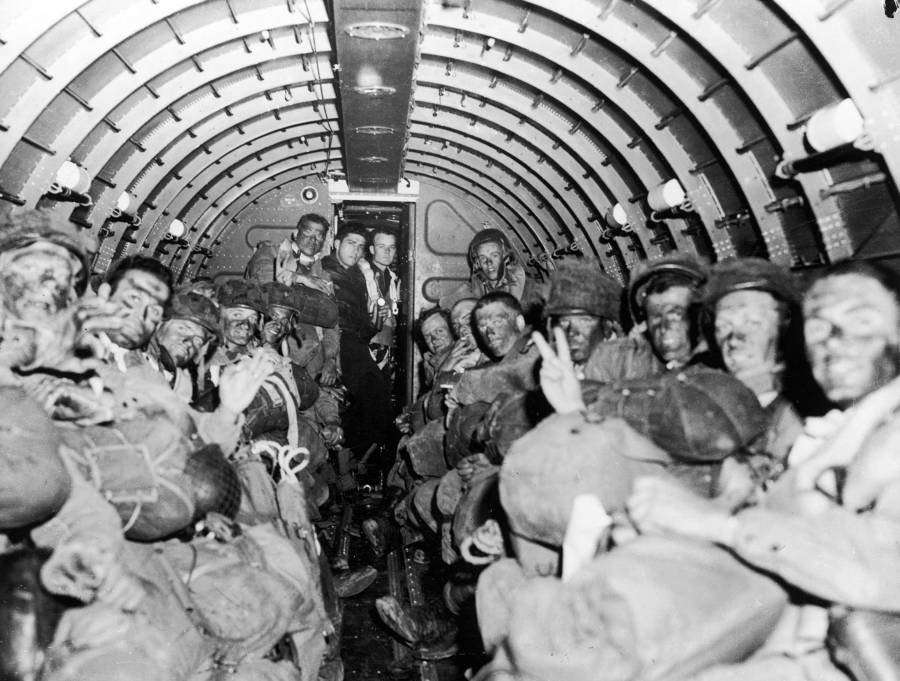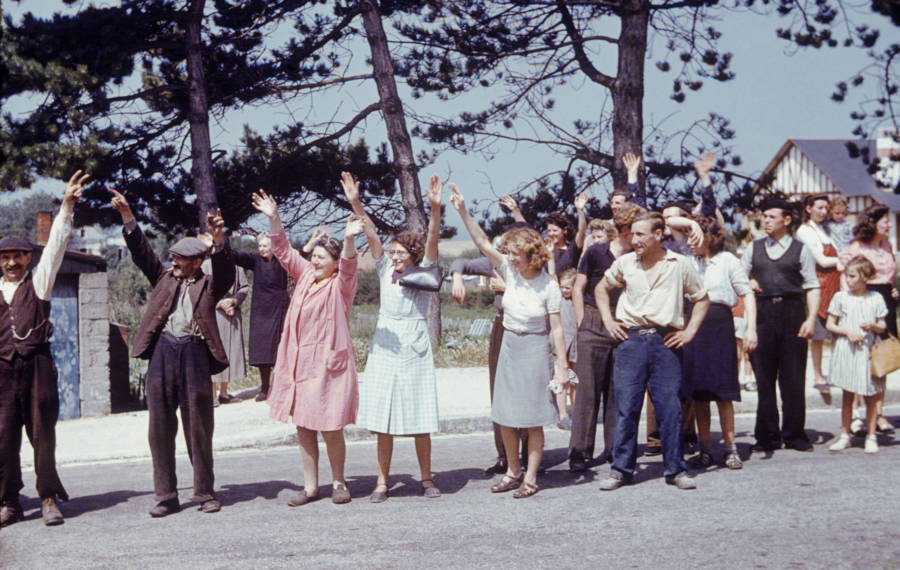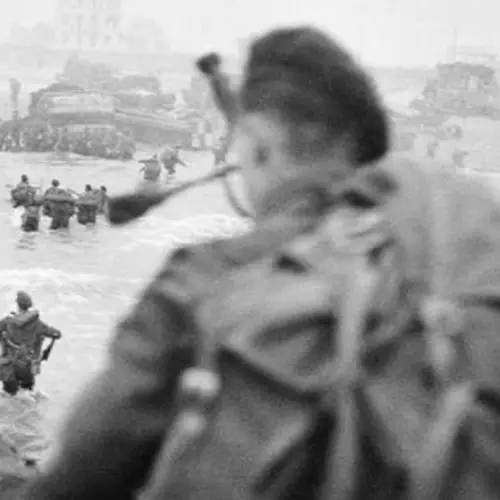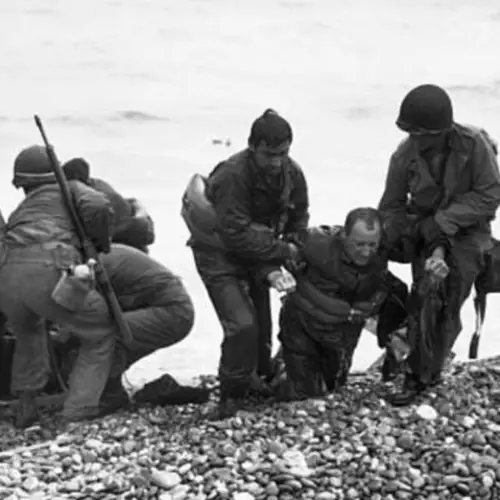On D-Day, more than 160,000 Allied troops converged on a single stretch of coastline to begin the Normandy invasion — and turn the tide of World War II.
“You are about to embark upon the Great Crusade, toward which we have striven these many months,” began Supreme Allied Commander Dwight D. Eisenhower’s order of the day for June 6, 1944. “The eyes of the world are upon you. The hope and prayers of liberty-loving people everywhere march with you.”
As Allied troops boarded their transports in southern England bound for France’s Normandy coast, they received a written copy of this order. And on any other day, such words might have sounded grandiose.
However, this was D-Day, the beginning of the Allied invasion of Western Europe. On this day, more than 160,000 American, British, and Canadian soldiers spearheaded a campaign that would ultimately take them through Nazi-occupied France and into Germany, where they helped seal Allied victory in the European theater of World War II. On this day, Eisenhower’s words certainly matched the gravity of the moment. As the iconic D-Day pictures that followed would later show, this was a moment of nearly unprecedented carnage and heroism.
After receiving the order, Allied soldiers made their way across the English Channel, landed on the northern coast of France, and stormed the beaches while facing a well-entrenched German defensive line that had long been sitting there, waiting for this moment to arrive.
With a prepared German force ready to repel the Allies, the invading troops suffered enormous casualties over the course of just that one day. Most sources agree that more than 4,000 Allied soldiers died while another 6,000 or more lay injured or missing, but the true number of the Allies' D-Day casualties will almost certainly never be known for sure. But the wealth of D-Day photos left behind reveal the brutality faced by the troops who stormed the beaches on June 6.
"When we got to the beach, I said to one of my men, Cpl. Meyers, 'If there's a hell, this has got to be it,'" recalled American Army Sgt. Ray Lambert. "And it was about a minute later that he got a bullet in his head."
But while the Allies paid a high price, they won the day and established a beachhead at Normandy that allowed them to soon bring more than 2 million additional troops into France. With extraordinary aid from the Soviet forces fighting the Germans on the war's Eastern Front, Allied troops eventually stormed into Germany from the west and helped bring the Nazis' reign to an end.
"It was unknowable then," President Barack Obama said of D-Day on its 65th anniversary in 2009, "but so much of the progress that would define the 20th century, on both sides of the Atlantic, came down to the battle for a slice of beach only 6 miles long and 2 miles wide."
Obama's words, like Eisenhower's 65 years before, may sound overly lofty at first blush. But when you consider the full weight of what D-Day has meant to modern world history, such words are right on the mark.
Inside The Allies' Careful Preparations For D-Day


US Army Air Force/US Army Air Force/The LIFE Picture Collection/Getty ImagesAmerican paratroopers prepare to jump on D-Day.
Everybody knew it was coming.
Soon after Germany invaded the USSR and opened up the war's Eastern Front in June 1941, Soviet leader Joseph Stalin began asking the Allies to invade Europe from the West in an attempt to close in on the Nazis from both sides and hopefully bring them to their knees. And Hitler knew it.
"Well, is it or isn't it the invasion," Hitler asked Field Marshal Wilhelm Keitel on the afternoon of June 6, 1944. After all, "the invasion" had long been virtually inevitable. D-Day pictures would later make clear just how entrenched the awaiting German forces were, sure that the invasion would come.
Soviet forces in the East had, while sustaining enormous casualties, been succeeding in grinding the Nazi ground advance to a halt and even beating them back toward Germany. Thanks in large part to massive conflicts of attrition like the Battle of Stalingrad and the Battle Of Kursk, Hitler's forward progress into the Soviet Union had ended by the summer of 1943.
That May, the Allied leaders in attendance at the Trident Conference in Washington, D.C. had finally decided to embark upon the invasion from the West that would complement the Soviet's Eastern progress and deliver the decisive blow to Hitler's armies. With German forces being pushed back in the East, all that remained was to push them back from the West and retake Europe from both sides at once.
At the Trident Conference, Allied leaders considered the best starting point for this Western invasion and soon settled upon France's Normandy coast. Close to Britain, near the important port city of Cherbourg, and only a little farther from the French capital in Paris, Normandy was the clear choice.
And Hitler knew that too. It wasn't just that the Nazi leadership knew the invasion was coming, they even had a pretty good idea of where it was coming.
It was simple geography, really. With Britain the last major Allied holdout unconquered by Nazi forces in the West, the invasion all but had to come from the sea and involve landings along Europe's northwestern coastlines.
So that's precisely where Hitler had been building his Atlantic Wall — a massive series of fortifications and bases stretching all the way up along the coasts of France through Belgium, the Netherlands, Denmark, and on to Norway — since 1942. Now, the Allies had no choice but to break through that massive wall.
And to do it, they were going to need to plan an amphibious invasion unlike anything the world had ever seen. Even the most expansive vistas captured in the D-Day pictures that would later surface hardly capture just how vast the invasion was.
With U.S. General Dwight D. Eisenhower at the helm, American, British, and Canadian forces (alongside help from several other Allied nations) totaling some 156,000 troops responsible for some 200,000 vehicles planned to execute the Normandy invasion — known as Operation Overlord and more popularly as D-Day (an all-purpose U.S. military term that designated the start of any given operation) — by air, sea, then land.
The scale of it was indeed like nothing else ever witnessed in history to that point.
Storming The Beaches Of Normandy On D-Day
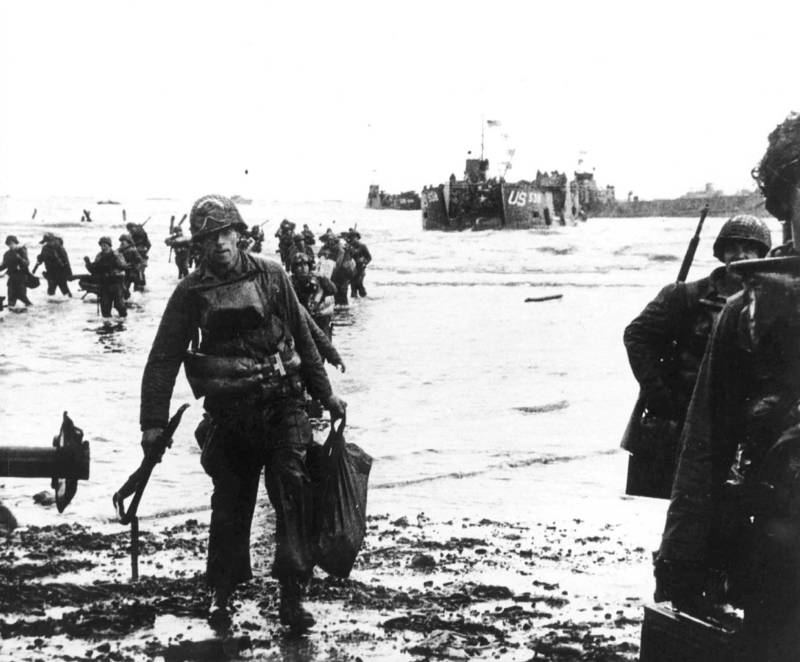

Wikimedia CommonsAmerican troops land on Utah Beach on D-Day.
First, they came from the air.
Shortly after midnight on June 6, Operation Overlord commenced with more than 13,000 British and American paratroopers dropping into Normandy behind German lines under cover of darkness. Meanwhile, the Allies' aerial bombardment began as some 2,200 planes attacked German positions both along the coast and farther inland.
If the Germans had any doubts that the Normandy invasion was coming, they were certainly gone now.
The awaiting German troops totaling approximately 50,000 surely knew that with Operation Overlord's aerial invasion underway, the amphibious landings would soon be coming. And later that day, with the help of almost 7,000 vessels coming from Britain across the English Channel, about 132,000 Allied troops landed on the beaches of Normandy (codenamed Utah, Omaha, Sword, Juno, and Gold).
The beach landings on D-Day saw Allied troops approach the beaches in landing crafts then wade through the shallows and onto the shore where the German lines boasted dozens upon dozens of artillery guns perched within well-defended fortifications and ready to decimate the invading forces from above. It was a bloody and brutal affair.
"Two kinds of people are staying on this beach," U.S. Col. George A. Taylor famously said, "the dead and those who are going to die."
And he was absolutely right. To stay on the beach meant all but certain death.
"When we got within a thousand yards of the beach, you could hear the machine-gun bullets hitting off the front ramp of the boat," recalled U.S. Sgt. Ray Lambert. "The ramp went down, and we were in water over our heads. Some of the men drowned. Some got hit by the bullets. The boat next to ours blew up. Some of those men caught fire. We never saw them again."
"All I remember is mayhem," remembered U.S. Lt. George Allen, "dead bodies floating in the water."
Those who did make it onto the beaches on D-Day had to fight through the machine gun fire, charge the bluffs overlooking the surf, and launch an attack against an elevated German position prepared for this very moment. The D-Day pictures that capture the ensuing carnage reveal just how prepared the Germans were.
The Allies, however, benefited from at least two decisive factors: First, their various deception efforts designed to mislead the Germans as to both the date and location of the invasion had largely paid off. Second, that morning, Hitler had happened to sleep in.
Having ordered his subordinates to not disturb him for any reason, Hitler didn't wake up until approximately 11 a.m. or noon (accounts vary), some five hours after the D-Day beach landings had begun. And during those five hours, the Germans were somewhat stalled without their Führer to give them permission to release their tank divisions.
And when Hitler did finally wake up, he remained convinced that the Normandy invasion was merely a deception, just as the Allies had hoped. Only after his commanders on the ground insisted that he was mistaken did he finally give orders to marshal more resources to the beaches of France.
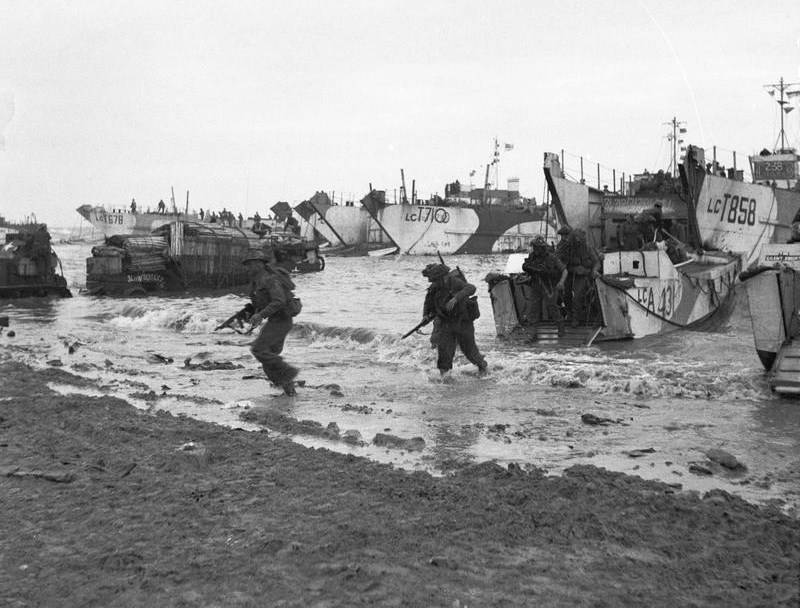

Wikimedia CommonsBritish troops walk ashore at Gold Beach during the execution of Operation Overlord.
With this stroke of luck on their side, the Allies eventually took the German bunkers overlooking the beaches and decisively claimed victory on the Normandy coast. The first phase of Operation Overlord had been a clear success — albeit at a cost of some 4,000 Allied dead with another 6,000 injured or missing (compared with approximately 1,000 Germans killed).
It was a brutal grind through a hail of bullets, but the Allied forces took the beaches and won the day. Though many reveal bloodshed and terror, some D-Day pictures capture this spirit of victory as well.
"I didn't know if I was going to make it out alive that day," said American infantryman Reggie Salisbury. "But really, I didn't have time to think about it. I just stayed low and knew not to look up in the same place twice."
The Aftermath Of The Normandy Invasion And The D-Day Pictures That Remain
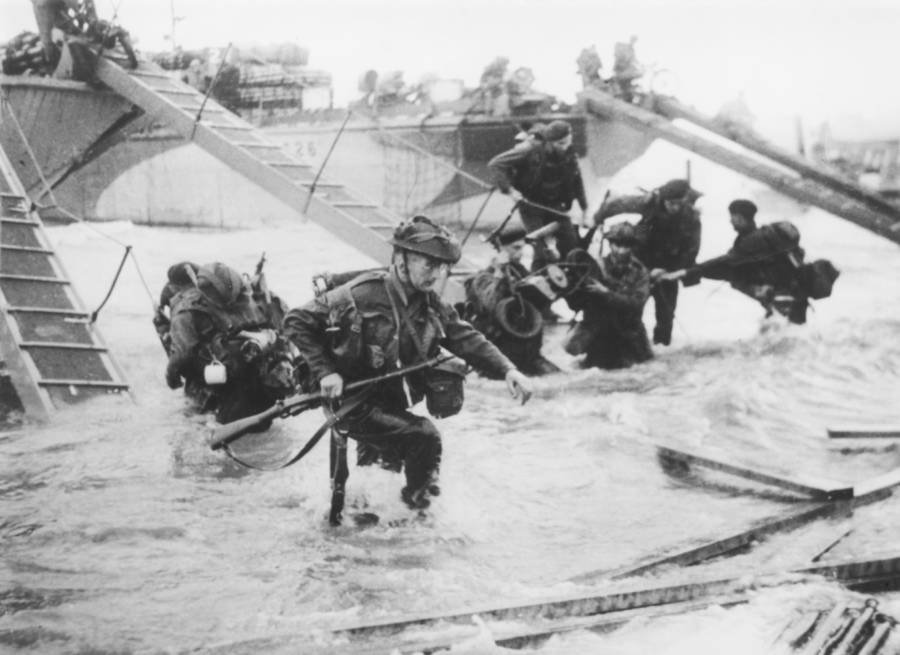

Hulton Archive/Getty ImagesBritish troops land at Juno Beach during the initial phase of the Normandy invasion.
With the D-Day aerial bombardment and beach landings completed, the Normandy invasion and Operation Overlord were only just getting started.
By the end of June, approximately 875,000 Allied troops would follow in the footsteps of their comrades who'd stormed the beaches on D-Day and push farther into German-occupied France. D-Day was over and the larger Battle of Normandy had begun.
Just as they had prevailed on D-Day, the Allies would of course prevail in Operation Overlord as a whole. Within a week of D-Day, the five beachheads were connected and the Allied forces moved into France. By August, the German forces inside France were in full-scale retreat. By the end of the month, Paris was liberated and, after more than four long years under Hitler's thumb, France was free.
Soon after, winter conditions and a last-ditch counteroffensive from Hitler in December (namely the Battle of the Bulge) temporarily halted the Allied march toward Germany, but Hitler couldn't stave off defeat forever.
In March, the Allies crossed the Rhine into Germany. From there, the Allied advance was quick and their defeat of the Nazis decisive. On May 7, 1945, with the German capital of Berlin overrun with Allied forces, the Nazi high command surrendered.
For nearly five years following their invasion of Poland in September 1939, the Nazis had maintained a stranglehold over much of western Europe. And within 11 months of D-Day, the Normandy invasion and Operation Overlord had brought Hitler's war machine to its knees.
"Your task will not be an easy one," General Dwight D. Eisenhower's order of the day for June 6, 1944 continued. "Your enemy is well trained, well equipped and battle-hardened. He will fight savagely."
"But this is the year 1944! The tide has turned! The free men of the world are marching together to victory! I have full confidence in your courage, devotion to duty and skill in battle. We will accept nothing less than full victory!"
And full victory is, in the end, precisely what the Allies got. The road to that victory ended in Berlin. But it started on the beaches of Normandy, a mere stretch of sand on which so much of Western history of the latter 20th century turned.
After this look at D-Day pictures and stories, experience the dramatic miracle of the Dunkirk evacuation. Then, discover the true story of the Niland brothers whose story inspired Saving Private Ryan.
